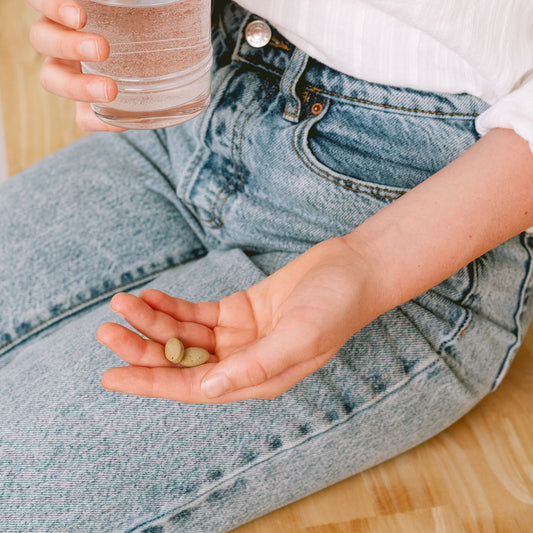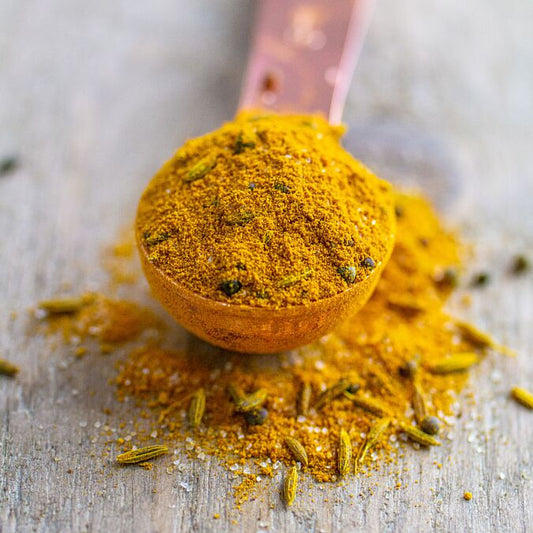Kapha-Balancing Foods

For those seeking to balance kapha dosha, balance can be greatly supported by eating a healthy diet of kapha-pacifying foods and kapha-balancing recipes.
Read below to find out what you can eat to help balance this dosha. The lists provided outline supportive kapha foods to embrace as well as common kapha foods to avoid. These recommendations are also useful for those with a combination of doshas, including vata-kapha and pitta-kapha constitutions.
If you are not certain whether your kapha is out of balance or if you should be incorporating kapha-reducing foods, take our free Ayurvedic dosha quiz.
Fruits
Fruit-based foods that are good for balancing kapha will generally be somewhat astringent and only mildly sweet. Dried fruits are acceptable, on occasion, but should only be enjoyed in small quantities because they are so dense and concentrated.
Fruits to avoid are those that are exceptionally sweet or sour (like oranges or grapes), and any that are especially heavy, dense, or watery—like bananas, coconut, dates, melons, pineapple, or plums.
And remember, fruits and fruit juices are best enjoyed alone—30 minutes before, and ideally at least one hour after, any other food. This helps to ensure optimal digestion.
Note: this rule does not apply to fruits that we typically consider vegetables (avocados, cucumbers, tomatoes, etc.). You will find these fruits listed among the “vegetables.”
|
Favor |
Avoid |
|---|---|
|
|
Vegetables
Vegetables that pacify kapha will generally be pungent, bitter, and astringent. Most vegetables include some combination of these tastes, so vegetables are an important centerpiece of any effective kapha-balancing diet.
Cooked vegetables are generally easier to digest than raw ones, so it's best to have raw veggies, salads, and kapha-aggravating vegetables in small quantities and at mid-day when digestive strength is at its peak. Raw vegetables are often more appropriate for kapha in the spring and summer seasons.
The only vegetables for kapha to reduce or avoid are those that are particularly heavy, dense, oily, or watery – like avocado, cucumber, olives, and the other vegetables listed in the reduce or avoid column below.
|
Favor |
Reduce or Avoid |
|---|---|
|
|
Grains
Grains that pacify kapha are light, dry, and rough. In general, grains tend to be staples in our diets because they are somewhat heavy and nourishing. But when it comes to balancing kapha, these qualities are best minimized, so reducing grain consumption overall can be a huge benefit.
Avoid grains that are exceptionally heavy, moist, or dense (like wheat, flours, breads, cooked oats, and pastas) as much as possible, and eat smaller quantities of appropriate grains. It often works well to supplement meals with extra vegetables or legumes, which are nutritionally rich, but also more balancing for kapha.
|
Favor |
Avoid |
|---|---|
|
|
Legumes
Legumes are generally astringent, which is one of the tastes that balances kapha. Kapha can enjoy a wide variety of legumes, but they should generally be well-cooked and well-spiced to make them more digestible.
Even well-cooked tofu, tempeh, and warm, spiced soy milk are acceptable. The only beans that don't work for kapha are simply too heavy or oily to be balancing.
|
Favor |
Avoid |
|---|---|
|
|
Dairy
Dairy products are best minimized when trying to reduce kapha because they tend to be heavy, unctuous, and can increase mucus production. As a rule, dairy milks should be taken at least one hour before or after any other food.
Ideally, milk is boiled and served hot with a pinch of turmeric or ginger—to make it more digestible and less congesting. Goat's milk and goat's milk products are the best options for kapha because they are lighter, but are best in moderation. Almond and rice milks are good substitutes.
|
Favor |
Avoid |
|---|---|
|
|
Nuts & Seeds
Nuts and seeds tend to be heavy, dense, and oily and are generally not terrifically balancing for kapha. But there are a few types of nuts and seeds that are acceptable in small quantities.
When trying to balance kapha, nuts and seeds are best enjoyed only on occasion.
|
Favor |
Avoid |
|---|---|
|
|
Meat & Eggs
Kapha does best with animal foods that are light and relatively dry (like chicken or freshwater fish), as opposed to those that are heavy, oily, or especially dense (such as beef, pork, or duck).
Eating less meat all around is generally beneficial. In fact, kapha can be easily pacified without any animal foods, if your diet doesn't already include them.
|
Favor |
Avoid |
|---|---|
|
|
Oils
Most oils are a bit heavy and, well, oily for kapha. However, in very small quantities, the oils in the favor column are acceptable, if they are of good quality. Because toxins tend to concentrate in fats, buying organic oils may be more important than buying organic fruits and vegetables.
When trying to balance kapha, you can minimize reliance on oil by sautéing foods in water instead of oil or by simply steaming them. For those occasions when a tad of oil is needed, the best oils for kapha are corn oil, sunflower oil, or ghee.
|
Favor |
Avoid |
|
|---|---|---|
|
|
Sweeteners
As the sweet taste is not particularly supportive to kapha, most sweeteners are better avoided. Honey on the other hand – which is dry, light, and heating—is the one exception, when used in small quantities. Honey also scrapes toxins and fat from the tissues, so it benefits kapha on multiple levels.
However, heating or cooking with honey creates toxins, so only raw and unprocessed honey should be used. Foods and drinks that contain refined sugars or corn syrup can be especially detrimental and should be avoided as much as possible.
|
Favor |
Avoid |
|---|---|
|
|
Spices
Most spices are wonderful for kapha, so feel free to experiment with a wide variety of new and exotic spices. Kapha is the only dosha that can usually handle fiery hot foods. Even if those don't suit you, a variety of mild spices will help to strengthen the digestive fire and can improve overall metabolism.
In particular, the pungent and digestive qualities of onions, garlic, ginger, black pepper, chili pepper, and cayenne pepper benefit kapha.
|
Favor |
Avoid |
|---|---|
|
|
More for You
Kapha and the Six Tastes
Kapha is primarily composed of the earth and water elements, which make kapha heavy, slow, cool, oily, smooth, dense, soft, stable, gross, and cloudy. Because of these characteristics, kapha is balanced by the pungent, bitter, and astringent tastes and aggravated by the sweet, sour, and salty tastes.
How to Make Kitchari
Perfect for cleansing, kitchari is an ideal food of choice during times of stress on the body, such as during periods of overwork or seasonal transitions.










